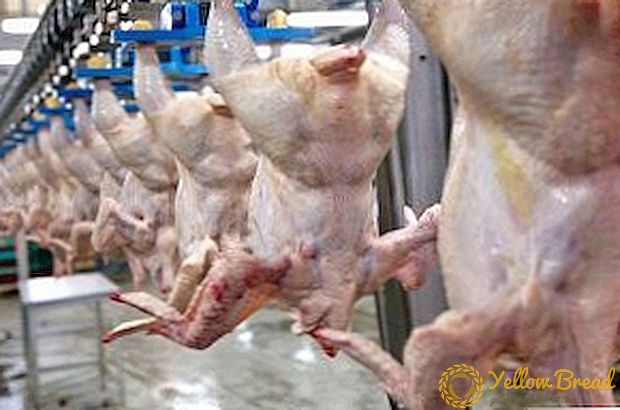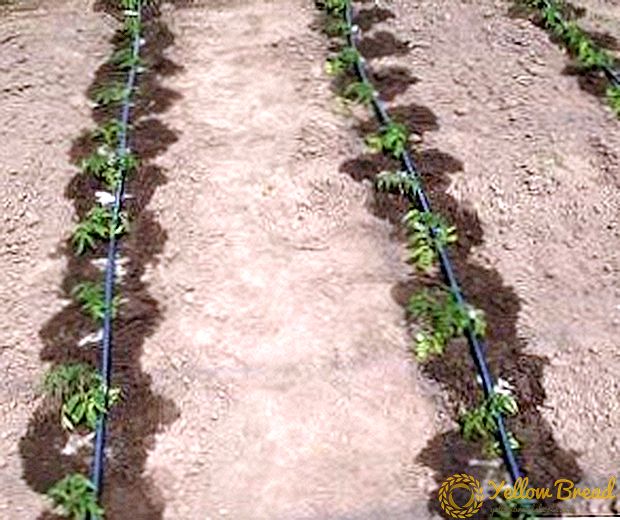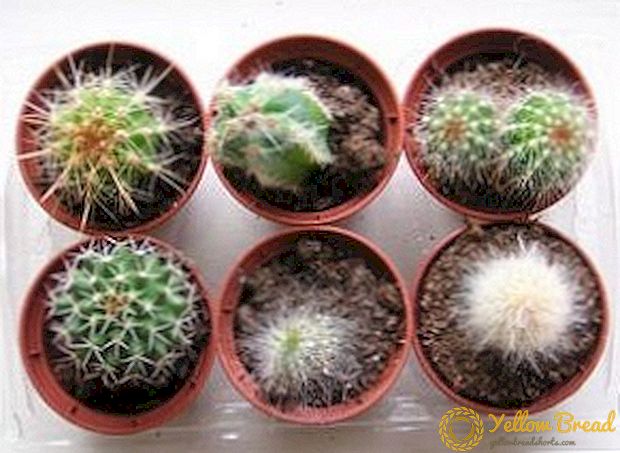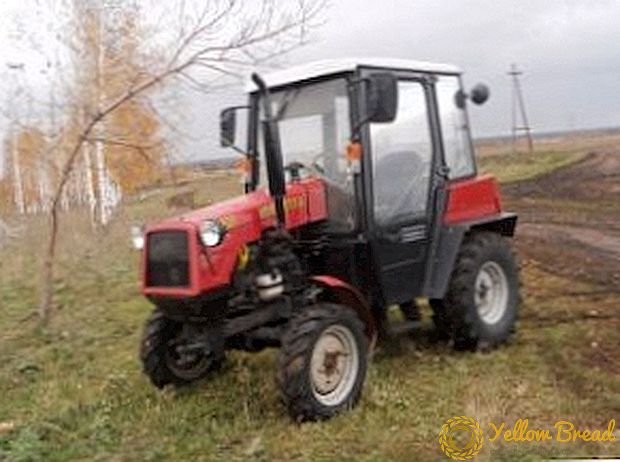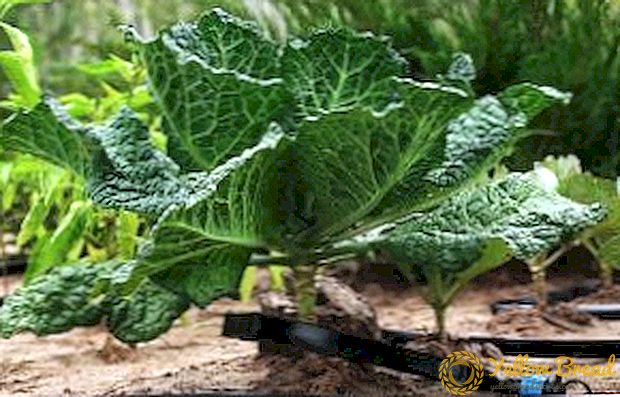 Radish is a common vegetable with healthy and juicy root vegetables. Therefore, under it often allocate space in the gardens. There are up to eight varieties of this species belonging to the species of radish (Raphanus sativus L.) of the Cruciferous family. The species includes annual and biennial crops.
Radish is a common vegetable with healthy and juicy root vegetables. Therefore, under it often allocate space in the gardens. There are up to eight varieties of this species belonging to the species of radish (Raphanus sativus L.) of the Cruciferous family. The species includes annual and biennial crops.
In the wild form grows in Europe, Western Asia and North Africa. Radish varieties are divided into European and Asian (Eastern). At our tables and gardens, European ones are most often present, while the eastern ones, which include two forms - Japanese (daikon) and Chinese (lobo), are few. But in vain. They are better in taste, have large roots without bitterness, and they also do not require special care. In this article we will talk about how to grow lobo radish.
- Description of radish lobo
- What loves radish lobo
- The best predecessors of radish lobo
- Is the radish whimsical to lighting
- Soil for growing radish lobo
- Planting Lobo radish
- How to care for radish lobo
- How to water the radish
- Features of Chinese radish fertilizer
- Pest control radish lobo
- Radish Lobo: Harvesting
Description of radish lobo
First, let's look at it: Lobo radish - what it is and what it is eaten with. Root crops of the Chinese species are large, round or elongated. They can reach a mass of 500 grams or more (record holders of a few kilograms are fixed). In color, they are different: light and dark green, pink, red, purple, in the upper part - always green. 
Lobo root vegetables taste succulent, delicate, weakly pointed, without bitterness, which is typical for European species containing much more mustard oil. When eaten resemble the taste of radish.
In terms of food composition, all radishes are equally beneficial.They are recommended to be used regularly to cleanse the kidneys and liver, to remove cholesterol and excess fluid from the body, to be fed with vitamin C. Radish roots can normalize digestion and have a bactericidal effect.
Lobo seeds are sold in stores under several names: "Margilan radish", "Chinese radish", "Lobo radish". For growing in our climatic conditions, the most suitable varieties Troyandova and Lebidka.
Variety Lebidka. It has elongated white roots, reaching an average weight of 520-580 g, with tender juicy flesh. Tastes on the dessert scale are marked with five points. The vegetation period is 86-91 days. Productivity - 70-80 kg / 10 sq. m. This radish can be stored for a long time. 
Variety Troyandova. It has oval root crops of pink color, with an average weight of 670-700 g, with delicate pulp. Taste is pleasant, it is noted in 4,9 points. The vegetation period is 80-82 days. Productivity - 64-67 kg / 10 sq. m. Stored for a long time. 
If Lobo radish and its description interested you, then we recommend to learn about its cultivation and care. Immediately, we note that the plant is unpretentious and even succumbs to gardener novices.
What loves radish lobo
In general, lobo is not a demanding culture. It has no particular preferences for soil composition, light, temperatures. The only thing that she particularly likes is the good humidity of the soil and air.
Chinese lobo radish belongs to cold-resistant plants. Its seeds begin to germinate at a temperature of + 2 ... +3 ° C. The optimum temperature for the appearance of sprouts is 20-25 ° C. However, even young shoots are able to transfer light frosts to -3 ... -4 ° C. Mature radish stand at -5 ... -6 ° C, but not for long. Root crops develop normally at + 5 ... +25 ° С. However, they grow best at + 18 ... +20 ° С.

The best predecessors of radish lobo
Since lobo radish has the same diseases and is subject to the same pests as other plants from its cruciferous family, it should not be planted after cabbage, radishes, as well as carrots, beets, horseradish. The best predecessors will be garlic, onions, cucumbers, legumes, dill, potatoes. It can be sown immediately after harvesting early crops or planted in the rows of potatoes, onions, cucumbers, etc.
In the same place where Lobo radish or other cruciferous trees grew, it can be planted only after three or four years.
Is the radish whimsical to lighting
Radish loves to grow in well-lit areas, is a plant of a long daylight hours. However, this is not the determining factor for its good growth and successful fruiting.
Soil for growing radish lobo
The Chinese species can grow on any soil, but it feels best on nutrient-rich sandy loams or loams with neutral acidity. 
Planting Lobo radish
The site for the cultivation of radish Lobo must be thoroughly cleaned of weeds and fertilize. For feeding the soil, humus (4-5 kg / 1 sq. M), ammonium nitrate and superphosphate (15-20 g / 1 sq. M), potassium chloride (5-10 g / 1 sq. M) are used. After fertilization, the ground must be well dig and water.
Since lobo belongs to late varieties, it is better to plant it in two terms: in the first decade of May, in the first or second decade of July.
 First, make small grooves that are well watered. The distance between the rows should be 45 cm. Sowing is carried out according to the 45 x 10 cm scheme. Seeds are deepened into the soil by 1.5-2.5 cm. Then they are sprinkled with earth and lightly clapped with the palm. Sown at the rate of 3-5 g of seeds per 1 square. m. To accelerate the germination of crops can be covered with a film.
First, make small grooves that are well watered. The distance between the rows should be 45 cm. Sowing is carried out according to the 45 x 10 cm scheme. Seeds are deepened into the soil by 1.5-2.5 cm. Then they are sprinkled with earth and lightly clapped with the palm. Sown at the rate of 3-5 g of seeds per 1 square. m. To accelerate the germination of crops can be covered with a film.Under favorable conditions, the first shoots appear in five days, maximum - in a week. In the future, seedlings will require thinning. The first time this procedure is carried out in the phase of two or three true leaves, in the second - in a month. For normal development, plants should be located at a distance of 20 cm from each other.
Since during this period young plants are not yet protected from the onset of pests such as cruciferous flea, it is desirable to treat them with insecticides or sprinkle with wood ash (or a mixture of ashes with tobacco, ashes with lime in a 1: 1 ratio). Dusting with ashes can begin as soon as the first sprout appears. It will take them several times.If you prefer chemicals, you can use Ridomil (10 g / 10 l of water), Decis (5 g / 10 l of water), Bi-58 (5 g / 10 l of water), etc. Consumption of working mixture: 3 l / 100 sq. m
How to care for radish lobo
Lobo after planting will require a little attention, and care for it will be in watering, fertilizer, loosening and weeding the soil, as well as protection from pests. 
How to water the radish
Radish is sensitive to a lack of moisture, so it will need to be watered periodically. Mandatory watering will be in dry and hot periods.
It is advisable to loosen the soil once a week to a depth of 8-10 cm. Do not neglect weeding and weed removal.
Features of Chinese radish fertilizer
Under planting radish lobo fertilizers are applied several times per season - preferably three or four times at intervals of 10-15 days. Apply nitrogen-containing dressings. Their first dose (in the period of three or four true leaves) is 15-20 g / 10 l of water.
When performing the procedure for the second and third time, you must add fertilizer with potassium in the composition. You can also make superphosphate (10 g). 
Pest control radish lobo
Radish Lobo with properly carried out agricultural cultivation and preventive spraying infrequently affected by diseases and pests. However, this happens. It has the same problems as all crucifers. So, she may suffer from diseases such as kila, fusarium, bacteriosis.
From parasites to attack her love cruciferous flea beetles, rapeseed flower beetle, cabbage and sprout flies, cabbage and rapeseed bug, etc.
Cruciferous flea - one of the most dangerous pests, since they can completely destroy young crops in a couple of days. Hibernate under plant debris and in the soil. Go out for wrecking in April. Eat leaves, forming through holes on them.
We have already written about preventive spraying shoots. Also for the purpose of prevention, it is important to periodically loosen the soil and fight weeds. If the flea still attacked the radish, you can scare it, repeatedly sprinkling the plants with infusions of wormwood, tobacco, and dust it with ashes. Such procedures will need at least three, with intervals of 4-5 days. 
With a massive defeat without the permitted insecticides can not do.However, chemical treatments must be stopped at least one month before harvest.
The same control measures should be applied when attacking other pests. At the same time try to start with gentle methods: spraying decoction and infusions of insecticidal plants, dusting with ashes, tobacco dust, lime, etc.
Radish Lobo: Harvesting
Root crops of radish Lobo must be removed before the first frost - the harvest is carried out in the second or third decade of October. If frosts find lobo in the soil, it can significantly harm the fruit. Radish roots are pulled out of the ground for the tops of flowers or resort to using shovels. Harvested radish leaves are suitable for feeding farm animals. In radish, which is planned for winter storage, it is better not to trim the tops, but twist. At the same time, a stem of 2 cm should remain
In order for Lobo to keep his taste and healthy appearance longer, it must be stored in the basement at a temperature of + 2 ... +3 ° С and humidity of 80-90%. Under storage use boxes, sand, or poured them a slide. It is important to avoid freezing vegetables. With proper storage, radish lobo can last until spring.

